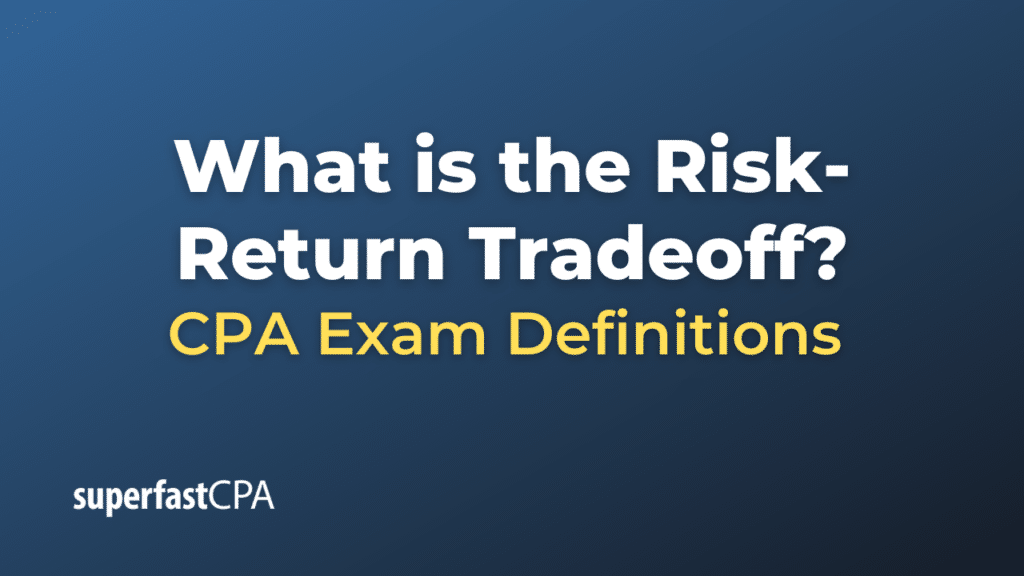Risk-Return Tradeoff
The risk-return tradeoff is a fundamental principle in finance and investing which asserts that the potential return on an investment is usually directly correlated to the risk associated with that investment. In other words, the higher the risk, the higher the potential return, and conversely, the lower the risk, the lower the expected return. This tradeoff exists because investors generally need to be compensated for taking on additional risk.
Here’s a breakdown:
- Low-Risk Investments: These typically offer modest returns. Examples include government bonds, savings accounts, and money market funds. The primary attraction of these investments is not their return, but their safety.
- High-Risk Investments: These have the potential for much higher returns, but they also come with a higher chance of loss. Examples include stocks, real estate, and commodities. While they offer a chance for significant gains, there’s also a risk of substantial losses.
- Diversification: Investors often employ diversification as a strategy to balance out the risk-return tradeoff. By spreading investments across various assets or asset classes, they aim to achieve a desired return while minimizing the risk. The idea is that not all investments will perform poorly at the same time, so losses in one area might be offset by gains in another.
Investors should consider their individual risk tolerance, financial goals, investment horizon, and other factors when making investment decisions. Some people might be more risk-averse and prefer stable, low-risk investments, while others might be more risk-tolerant and seek out higher returns with the understanding that there’s a greater risk involved.
It’s also essential to recognize that past performance doesn’t guarantee future results. Just because a particular investment has historically provided a certain return does not mean it will continue to do so. Always make sure to conduct thorough research or consult with financial professionals before making significant investment decisions.
Example of the Risk-Return Tradeoff
Emily has $10,000 she wants to invest. She’s considering three different investment options:
- Savings Account:
- Risk: Very low
- Expected Annual Return: 1%
- Corporate Bonds:
- Risk: Moderate
- Expected Annual Return: 5%
- Stocks in Technology Companies:
- Risk: High
- Expected Annual Return: 12%
Emily’s Considerations:
- Savings Account:
- If Emily invests in a savings account, her money is relatively safe. By the end of the year, she can expect her investment to grow to $10,100 ($10,000 * 1.01). The return is guaranteed, but it’s also minimal.
- Corporate Bonds:
- Stocks in Technology Companies:
- This is the riskiest option. The stock market, especially for tech companies, can be volatile. While the potential return is 12%, there’s also a chance that Emily could lose a significant portion of her investment if the tech companies underperform. If the stocks perform as expected, her investment would grow to $11,200 ($10,000 * 1.12) by the end of the year. But if the tech sector has a downturn, she might end up with less than her initial $10,000.
Decision:
If Emily is risk-averse, she might opt for the savings account or corporate bonds. If she’s willing to take on more risk for the chance at a higher return, she might invest in tech stocks.
Alternatively, Emily could diversify her investment to balance the risk-return tradeoff. She might put half of her money in corporate bonds and half in tech stocks. This way, she can potentially enjoy some of the high returns from stocks while mitigating her overall risk with the more stable bonds.
This example demonstrates how the potential return on an investment is usually associated with the level of risk involved. The key for any investor is to find an acceptable balance between risk and return that aligns with their financial goals and risk tolerance.













